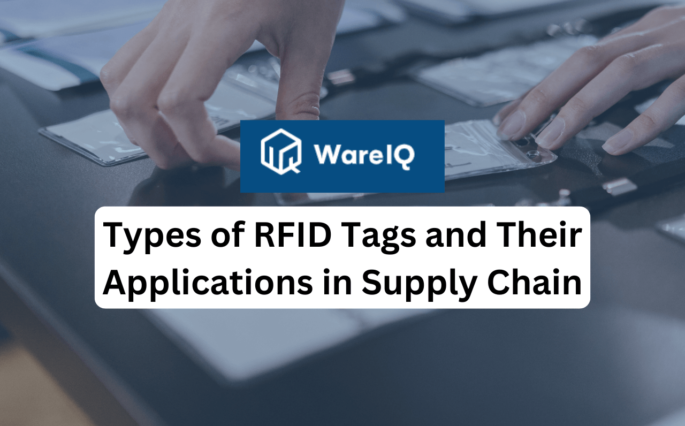Return Fraud Prevention: Strategies for Amazon Sellers and Buyers


In the realm of online retail, particularly on platforms like Amazon, return fraud has emerged as a significant challenge for both sellers and buyers. This article aims to provide a comprehensive understanding of return fraud prevention strategies. Return fraud can range from buyers returning different items than what they purchased to sellers falsely claiming an item was never returned.
This guide will delve into the intricacies of return fraud prevention, offering insight into common scams, Amazon’s fraud detection mechanisms, and effective strategies for both sellers and buyers to protect themselves. Understanding these elements is crucial for maintaining the integrity of transactions and ensuring a fair and secure shopping experience on Amazon. This article will equip both sellers and buyers with the knowledge and tools necessary to navigate and safeguard against return fraud in the dynamic world of e-commerce.
- What Is Return Fraud Prevention?
- Explaining the Amazon Return Scam with Examples
- What Is Amazon Fraud Detection?
- What Are Some Seller Protection Strategies and Buyer Protection Strategies?
- Conclusion
- FAQs About Return Fraud Prevention
- What is return fraud, and how does it affect Amazon sellers?
- How can Amazon sellers protect themselves against return fraud?
- What should buyers do to avoid becoming victims of return fraud on Amazon?
- How does Amazon detect and prevent return fraud?
- What are the consequences of committing return fraud on Amazon?
- Can Amazon sellers appeal fraudulent return claims made by buyers?
- Are there specific tools or services that help in managing return fraud on Amazon?
What Is Return Fraud Prevention?
Return fraud prevention is a set of strategies and measures aimed at protecting against deceptive practices related to product returns, particularly in e-commerce. This type of fraud can include various schemes, such as returning counterfeit products, making false claims about product condition, or exploiting return policies for financial gain. Effective return fraud prevention involves:
1. Awareness of Fraud Types
Understanding the different types of return fraud, including wardrobing (returning used items), receipt fraud, and returning counterfeit or swapped items.
2. Clear Return Policies
Establishing and clearly communicating return policies that define the conditions under which products can be returned. This includes time frames, product conditions, and documentation requirements.
3. Monitoring and Tracking Returns
Keeping detailed records of sales and returns to identify patterns or anomalies that may indicate fraudulent activity. This can include tracking serial numbers or using RFID tags.
4. Inspecting Returned Items
Thoroughly inspecting items upon return to verify their condition and authenticity. This helps in identifying if the returned item is different from what was sold.
5. Training Staff
Train customer service and returns processing staff to detect signs of return fraud and handle suspicious returns appropriately.
6. Utilising Technology
Implementing technological solutions such as data analytics to monitor returns and detect unusual patterns that could indicate fraudulent activity.
By employing these strategies, both sellers and buyers can contribute to a more secure and trustworthy e-commerce environment. Return fraud prevention is essential for protecting businesses from financial losses and maintaining customer trust. In the next section, we will explore examples of Amazon return scams and how they operate.
Explaining the Amazon Return Scam with Examples
An Amazon return scam is a fraudulent activity where buyers exploit Amazon’s return policy to gain financially or receive goods without paying for them. One typical example of an Amazon return scam is the “item not as described” scam. Here’s how it typically works:
The Scam
A buyer purchases an item from a seller on Amazon. After receiving the item, the buyer initiates a return request, falsely claiming that the item is not as described, defective, or damaged.
False Claims
The buyer may allege that the item is different from the listing, faulty, or that they received an empty box, even if the product was delivered as described and in perfect condition.
Returning Different or Damaged Items
In some cases, the buyer may return a different item, a damaged item, or an empty box while keeping the original product.
Seeking Refunds
The buyer then seeks a full refund from the seller or Amazon under the pretence that they were dissatisfied with the product or received an incorrect item.
Impact on Sellers
This type of scam can lead to financial losses for sellers, as they have to issue refunds for items that were actually delivered as described. It also affects their reputation and seller metrics on Amazon.
Amazon has measures in place to detect and prevent such fraudulent activities, but scammers continually find new ways to exploit the system. Sellers need to be vigilant and employ strategies to protect themselves from such scams. In the next section, we will discuss Amazon’s fraud detection mechanisms and how they work to combat return fraud.
Related read: Return Management Operations
What Is Amazon Fraud Detection?
Amazon fraud detection refers to the set of systems and processes implemented by Amazon to identify and prevent fraudulent activities on its platform. These measures are crucial in safeguarding the interests of both buyers and sellers and maintaining the integrity of the marketplace. Here’s how Amazon’s fraud detection works:
1. Automated Systems
Amazon employs sophisticated automated systems that use machine learning and data analytics to monitor transactions and user behaviour. These systems can detect unusual patterns, such as abnormal return rates or inconsistencies in order and return data, which might indicate fraudulent activity.
2. Account Review and Monitoring
Amazon regularly reviews and monitors seller and buyer accounts for signs of fraudulent behaviour. This includes checking for compliance with Amazon’s policies and investigating suspicious activities.
3. Customer Feedback and Reviews
Amazon also utilises feedback and reviews from customers as part of its fraud detection process. Negative feedback or complaints about a seller or product can trigger further investigation.
4. Verification Processes
For both sellers and buyers, Amazon has verification processes in place. This includes identity verification and the validation of payment information to prevent fraudulent accounts from being created.
5. Collaboration with Law Enforcement
In cases of serious fraud or illegal activities, Amazon collaborates with law enforcement agencies to address and resolve these issues.
6. Continuous Improvement
Amazon continually updates and improves its fraud detection methodologies to keep up with the evolving tactics of scammers and fraudsters.
Amazon’s fraud detection efforts are a critical component in ensuring a safe and reliable online shopping experience. They help protect users from scams and maintain trust in the platform. In the next section, we will provide seller and buyer protection strategies to combat return fraud further.
What Are Some Seller Protection Strategies and Buyer Protection Strategies?
To safeguard against return fraud on Amazon, both sellers and buyers can implement specific strategies. Here are some effective measures for seller and buyer protection:
Seller Protection Strategies
- Accurate Product Descriptions: Ensure all product listings are precise and detailed, including high-quality images and comprehensive specifications, to avoid misunderstandings about the product.
- Record Keeping: Maintain meticulous records of transactions, including photographs or videos of items before shipping, to have evidence in case of a dispute.
- Inspect Returns Carefully: Thoroughly inspect all returned items for signs of wear, damage, or tampering and document the findings.
- Use Trackable Shipping: Employ trackable shipping methods to ensure that there is clear evidence of item delivery and return.
- Prompt Customer Service: Provide excellent customer service, including quick responses to queries and concerns, which can help resolve issues before they escalate.
- Educate Yourself on Amazon Policies: Stay informed about Amazon’s policies and updates regarding returns and fraud prevention.
Buyer Protection Strategies
- Verify Seller Reputation: Check the seller’s ratings and reviews before purchasing to ensure they are reputable.
- Understand Return Policies: Be aware of the return policies for items you purchase, including time frames and conditions for returns.
- Keep Records of Purchases: Save all documentation related to your purchases, including order confirmations and correspondence with the seller.
- Report Suspicious Activities: If you suspect fraudulent activities or receive a counterfeit or incorrect item, report it to Amazon immediately.
- Read Product Descriptions Thoroughly: Carefully read product descriptions and view all images to ensure the item meets your expectations, reducing the need for returns.
By employing these strategies, both sellers and buyers can contribute to a safer shopping environment on Amazon and protect themselves from potential return fraud.
Conclusion
In conclusion, return fraud is a significant challenge in the e-commerce ecosystem, impacting both sellers and buyers on platforms like Amazon. Implementing effective fraud prevention strategies is essential for maintaining the integrity of transactions and ensuring a fair trading environment. For sellers, accurate product descriptions, diligent record-keeping, and vigilant inspection of returns are vital practices that safeguard against fraudulent activities. Likewise, buyers must exercise caution by thoroughly reviewing seller reputations and product descriptions, understanding return policies, and keeping comprehensive records of their transactions.
Ultimately, the collective efforts of both sellers and buyers in adhering to these strategies significantly contribute to mitigating the risks associated with return fraud. By staying informed and proactive, Amazon users can protect their interests and enhance their overall experience on the platform, making e-commerce a more secure and reliable avenue for trade.
Also read: E-commerce Return Policies: Strategies for Refunds and Returns
FAQs About Return Fraud Prevention
What is return fraud, and how does it affect Amazon sellers?
Return fraud on Amazon involves deceptive practices where buyers misuse the return process, such as returning counterfeit products, making false claims, or keeping the original item while replacing something else. This affects sellers through financial losses, inventory issues, and potential damage to their reputation.
How can Amazon sellers protect themselves against return fraud?
Sellers can protect themselves by providing accurate and detailed product descriptions, using trackable shipping methods, keeping detailed records of transactions, scrutinising returns, and offering excellent customer service.
What should buyers do to avoid becoming victims of return fraud on Amazon?
Buyers should purchase from reputable sellers, thoroughly read product descriptions, understand the return policies, keep records of their purchases, and report any suspicious activities or inconsistencies to Amazon.
How does Amazon detect and prevent return fraud?
Amazon uses automated systems for fraud detection, which analyse patterns and anomalies in transactions. The platform also conducts account reviews, verifies user information, and collaborates with law enforcement to address severe fraud cases.
What are the consequences of committing return fraud on Amazon?
Committing return fraud can lead to various consequences, including account suspension or termination, legal action, and being barred from making future purchases on Amazon.
Can Amazon sellers appeal fraudulent return claims made by buyers?
Yes, Amazon sellers can appeal fraudulent return claims by providing evidence such as shipping records, photographs, and correspondence that counter the buyer’s claim.
Are there specific tools or services that help in managing return fraud on Amazon?
Amazon offers tools within Seller Central for managing returns and disputes. Additionally, third-party services and software solutions are available to help sellers track returns, monitor fraud patterns, and streamline the dispute resolution process.








